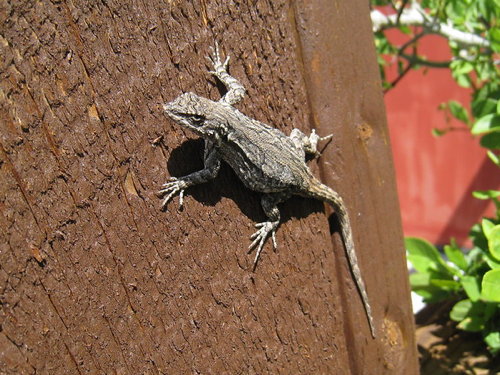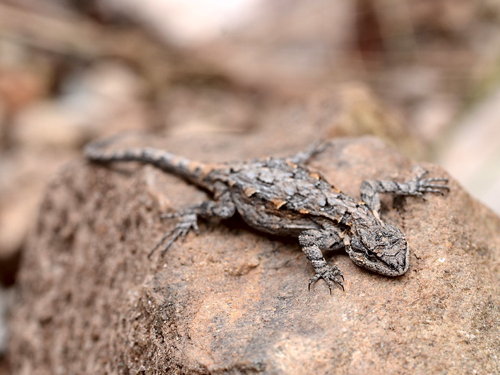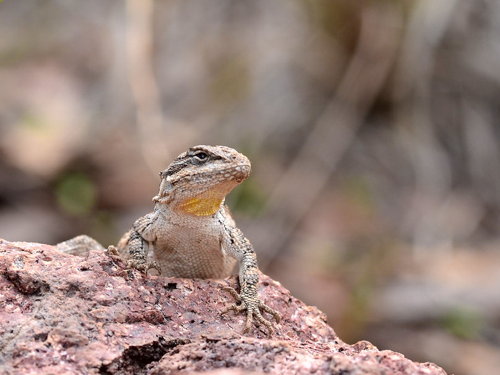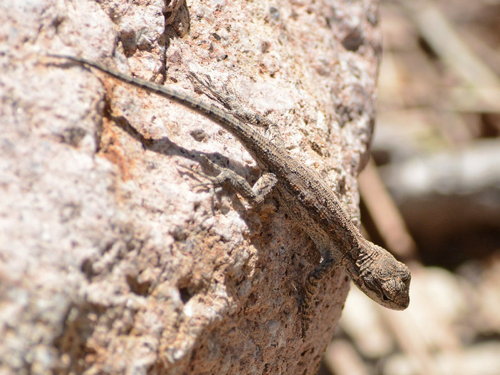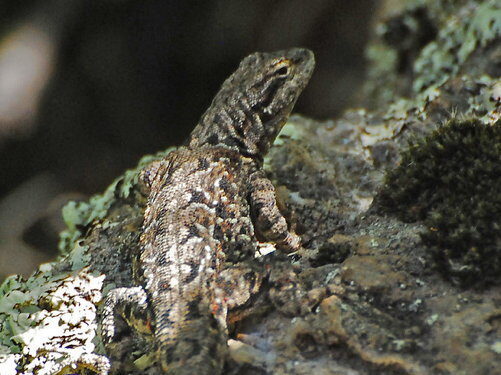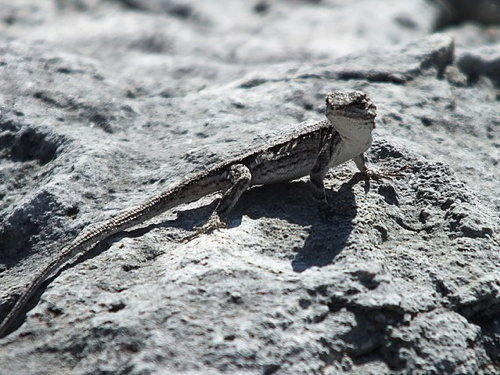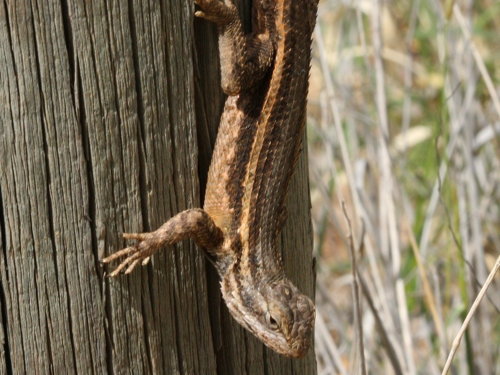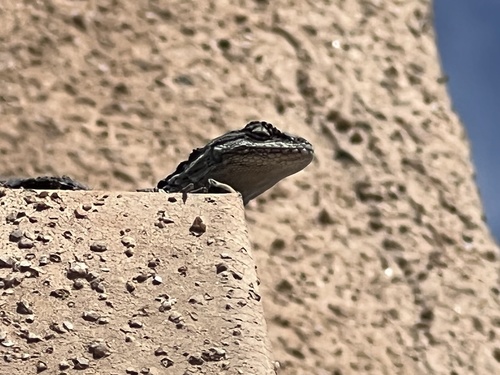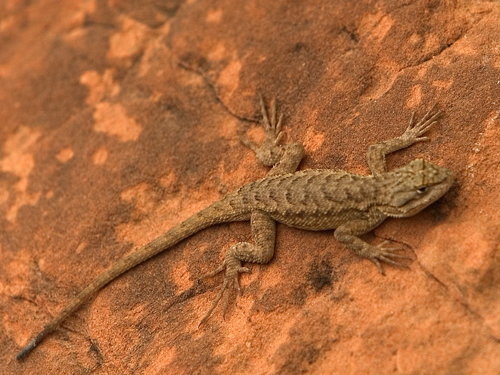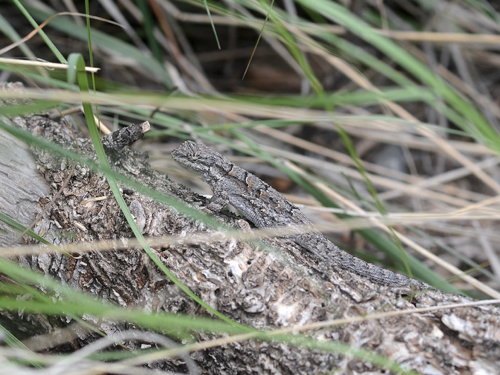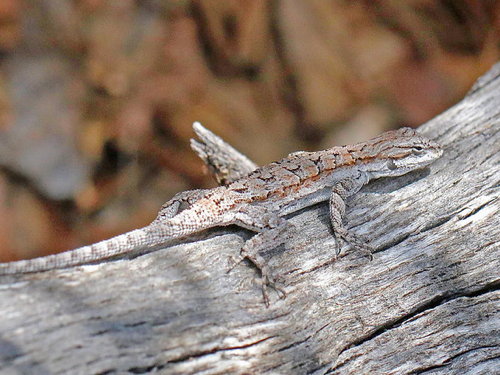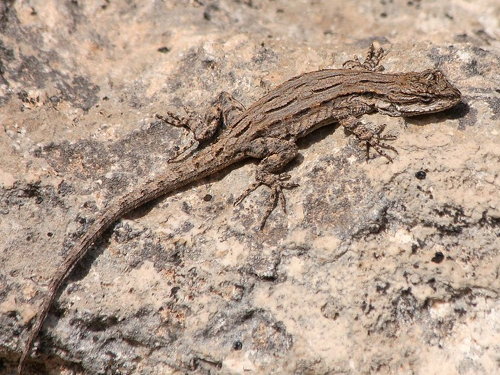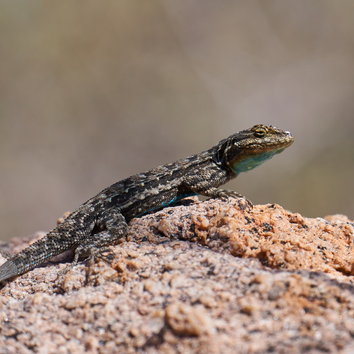Ornate Tree Lizard
AKA: Common tree lizard
Scientific name: Urosaurus ornatus
Type: Reptile
Family: Phrynosomatidae (North American Spiny Lizards)
Size: 1.5 to 2.4 in long (total length)
Weight: 0.14 to 0.23 ounces
Life Span: up to 3 years
Physical Description
Depending on the local habitat ornate tree lizards are gray, gray-brown, or tan with variable black or dark gray-brown irregularly shaped blotches and crossbars. Some individuals have lengthwise stripes, while others are plain. There are two bands of large scales that run down the back. The scales on the belly are smooth.
Males have two large, blue patches on the belly and a smaller patch of blue, blue-green, green, yellow, or orange on the throat. Females do not have belly patches and the throat patch is yellow, yellow-green, or orange. Juveniles have coloring similar to females in coloration but different body proportions.
Male
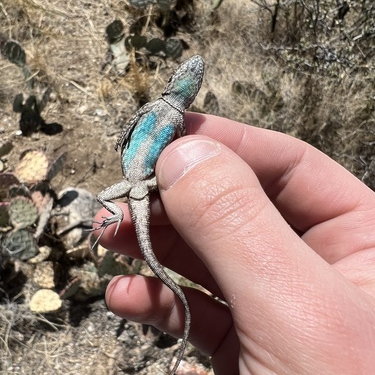
Female

Range and Habitat
Ornate tree lizards are found throughout the southwestern United States and northern Mexico. They can be found in forested areas, rocky terrain, on buildings and fence posts, and near streams. They do not typically live higher than 9,000 feet (2,770 meters) above sea level.
There are four subspecies of ornate tree lizard: smooth (Urosaurus ornatus levis), big bend (Urosaurus ornatus schmidti), Schott’s (Urosaurus ornatus schotti), and northern (Urosaurus ornatus wrighti). The smooth tree lizard is one seen in the local area.
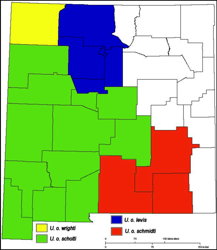
Diet
An ornate tree lizard’s diet consists of a variety of insects including aphids, beetles, flies, ants, bees, wasps, termites, moths, butterflies, grasshoppers, and crickets as well as some spiders. They will look down from an elevated position waiting motionless for prey to appear.
Behavior and Social Life
Ornate tree lizards are excellent climbers and are often encountered while basking or foraging on walls, fences, and buildings. They are also known for sitting very quietly on logs, boulders, and trees. Tree lizards avoid predators by being highly camouflaged. When predators are seen, these lizards will seek higher elevations up a tree or shelter under rocks. Though active during the day for much of the year, they hibernate during late fall and early winter with other lizards.
Like other lizards, ornate tree lizards communicate through chemical and visual signals with the latter particularly important in male-male interactions to establish a dominance hierarchy. A male will defend a territory by doing a 4-legged “push-up” and extending its colored throat. Females have their own territories but they rarely interact.
Beside a creek
Doing Pushups
Life Cycle
Mating occurs throughout spring and summer. Females will often mate with more than one male, particularly where populations are dense. After mating, the female picks an ideal spot to lay her eggs, making sure it has the required amount of moisture and warm temperature. She then digs a chamber in the soil or sand about 4 inches deep in which she lays anywhere from 2 to 16 eggs. She then covers them up with sand or dirt.
The eggs hatch about 30 days after being laid, though the timing varies with the locale. Once hatched, the young must fend for themselves. A female may lay up to six clutches in a season.
Adult
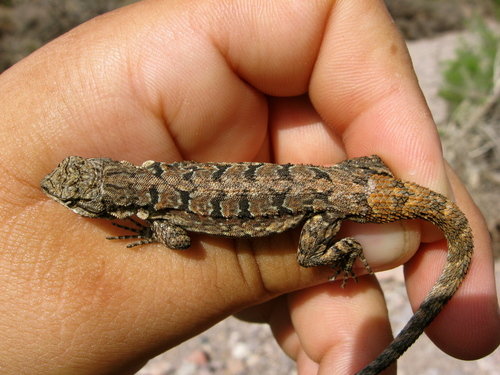
Juvenile
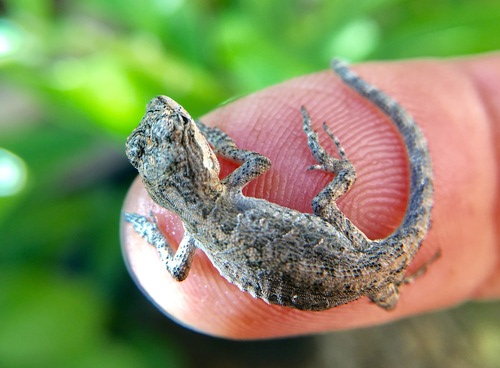
Ecological Role
Tree lizards play an important ecological role as a predator of insects and other invertebrates while being prey for other animals capable of catching and eating a small lizard.
Interactions With Humans
The benefit of tree lizards to humans comes from their control of insect populations. They are not known to pose any harm to humans or their pets.
Interesting Facts
- Ornate tree lizards have been well studied because of the variation in male throat color within a population that relates to different reproductive strategies.
- These lizards have also been studied for physiological changes during fight-or-flight related to stress and aggression.
- Juvenile lizards have relatively larger heads than adults.
- These lizards take advantage of their camouflage and sedentary behavior to surprise prey.
- Common predators of tree lizards include snakes and birds, such as owls.
- Females establish a territory during mating season and couple with males with overlapping territories.
- Both males and females reach sexual maturity by May to June of the year following hatching.
- Tree lizards are most often found in mesquite, alder, and cottonwood, but also on oak, pine, and juniper.

